As a collaborative partner for social and economic justice, Community Vision centers communities on the margins of opportunity by supporting their visions and the work of local leaders. Over the last few years, several movements and pivotal events inspired us to take a self-reflective look at how we advance our mission and the role capital can play in healing systemic injustices; particularly for Black communities, Indigenous communities, and communities of color.
In April 2016, the No DAPL movement at the Standing Rock Reservation in North Dakota was started by Indigenous youth to stop the Dakota Access Pipeline from being constructed under the Missouri River. For many people across the country, this movement brought awareness of the ongoing fight of Indigenous people to protect what we all depend on to live– water, land, and air. Since then, recognition and support of Indigenous communities is increasingly in the public consciousness and conversation. In recent years, ‘solidarity funding projects’ launched across the country and include the Honor Tax Project in the Humboldt Bay region, Real Rent Duwamish in Seattle, Manna-hatta Fund in New York City, Shuumi Land Tax in the San Francisco East Bay, and Honor Native Land Tax in Albuquerque, among others. These projects serve as a mechanism to direct financial resources to Indigenous communities and are offered as a step towards healing the historical and ongoing theft of life, land and culture from people native to this land.
Earlier this year, Community Vision began implementing our Reparative Land Fee Program in partnership with the Sogorea Te’ Land Trust and the California Tribal Fund, a project of the First Nations Development Institute. We’re honored to collaborate with these organizations and hope that we inspire other Community Development Financial Institutions (CDFIs) to create their own programs. This blog is a starting point for Community Vision to more broadly and publicly communicate about our Reparative Land Fee Program and why we are calling upon others in the CDFI industry to explore how they can use their economic and social power to resource Indigenous communities in the geographies in which they work.
CREATING OUR REPARATIVE LAND FEE PROGRAM
Community Vision began an intentional journey of deep internal racial equity work more than six years ago. We embarked on this path to be true partners for liberation and justice in the communities we serve. In 2017, we began our work in understanding an Indigenous perspective on what it means to be a human in the world. Facilitated by Patricia St. Onge, it was in this training that we were introduced to the philosophy of a Medicine Wheel as a way to understand identity, relationships, and power. In 2019, several Community Vision staff began book discussions after reading Edgar Villanueva’s book, Decolonizing Wealth: Indigenous Wisdom to Heal Divides and Restore Balance. That year we also hosted a workshop on decolonizing wealth at the 2019 Rural Justice Summit. These experiences shaped our approach to our reparative economy work, which acknowledges that the financial wealth amassed in this country was done so through theft and exploitation of land and people, and therefore it is our responsibility to contribute to the repair of this trauma caused by colonization.
Community Vision is committed to using capital to create pathways towards racial and economic equity. As a CDFI that facilitates real estate transactions on stolen land we will leverage our power and privilege as a financial institution by directing resources to Indigenous leaders. Our Reparative Land Fee Program collects a .5% self-imposed fee on the amount Community Vision lends in all real estate transactions. The revenue from our fee is disbursed on a quarterly basis to Indigenous-led organizations who are driving community-centered projects and are based in and serving the geographic areas of our work.
CULTIVATING SOLIDARITY WITH INDIGENOUS COMMUNITIES
To frame this high level overview of our program we’d like to direct readers to: Resource Guide for Indigenous Solidarity Funding Projects: Honor Taxes & Real Rent Projects, a guide developed by the Indigenous Solidarity Network and representatives from the Sogorea Te’ Land Trust, Real Rent Duwamish, and the Manna-hatta Fund. While we weren’t aware of this guide when building our program, we are uplifting this resource as we introduce our Reparative Land Fee Program because the guide was created by the organizations that inspired our program, and the process we used to develop our program aligns with the best practices and guiding questions to consider that are detailed in this guide.
The Resource Guide for Indigenous Solidarity Funding Projects begins by offering high-level best practices:
- Relationships are the basis of this work and need care, tending, transparency, and accountability.
- Go slow and be intentional.
- Prioritize building trust and commit to long-term relationships.
At the heart of these practices is the fact that organizations, particularly financial institutions, have a lot of pre-work to do before they consider respectfully and humbly approaching an Indigenous-led organization, even if it is to offer financial support. In other words, we must be self-aware and in constant practice of interrogating our assumptions and looking for our blind spots.
The guide then offers key questions to consider:
- Who is Indigenous to where you live?
- What Indigenous communities currently reside there?
- Who has strong relationships and a good reputation within local Indigenous communities?
- Who is well placed to use the resources to benefit local Indigenous communities?
- Who do you have strong relationships with?
- Who is interested in partnering with you? (Not everybody will want to.)
These key questions can initially seem straightforward, but it’s important to consider that as an outsider to Indigenous communities the answers will likely be more nuanced and take more time to learn than one might think. Our staff have slowly worked to build relationships with Indigenous communities in the geographies that we provide our services. We’ve made mis-steps and have been called out on them, which is part of the work of decolonizing wealth– being humble enough to admit and learn from mistakes.
We believe that these high-level best practices are the foundation of any Indigenous solidarity funding project because this work is not about the financial transaction, but about shifting power and healing the harms caused by colonialism and white supremacy culture. A critical aspect of this program is that it is building towards deeper partnership to co-create financial training, tools and resources that meet the needs of Indigenous communities we serve.
Some of our own considerations in developing the Reparative Land Fee Program have included:
- Who is leading the land conservation work and can leverage financial resources for long-term stability and growth?
- Who is cultivating and strengthening the voice and position of Indigenous women?
- Who reflects the Native lands where Community Vision conducts business?
CONTINUING THE CONVERSATION
Although this conversation may be new and gaining momentum within the financial industry and philanthropy, it’s important to be clear that Indigenous communities have been the stewards of the land since time immemorial. It is imperative that we support them in their work related to their traditional homelands and in turn, in their cultural practices. It is beyond time for CDFIs and the philanthropic sector to mobilize the full power and spectrum of our resources and networks to ensure a future where Indigenous people can freely practice ceremony and culture, grow their native foods and medicine, and live in joy; a future that acknowledges and honors the value of all life.
Stay tuned to learn more about Community Vision’s Reparative Land Fee Program. We will share more about the partnerships we’ve developed, the work of Sogorea Te’ Land Trust and the California Tribal Fund, how the revenue raised through our program is supporting their work, and how other CDFIs can create their own solidarity funding projects.






